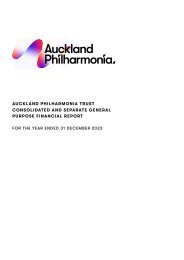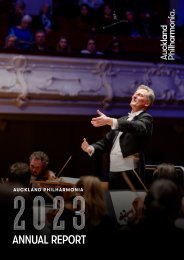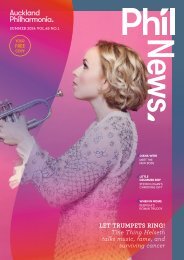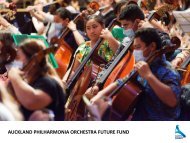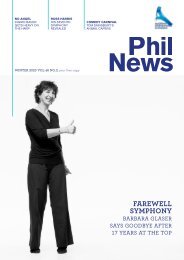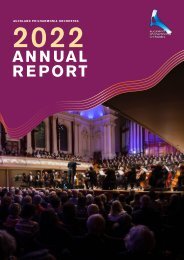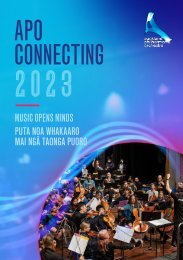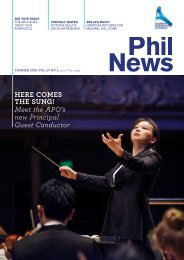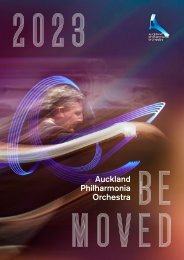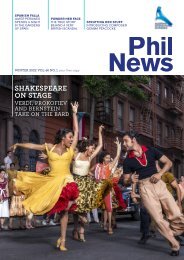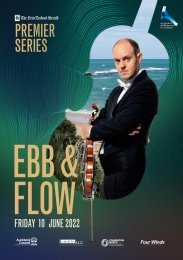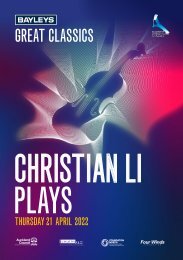You also want an ePaper? Increase the reach of your titles
YUMPU automatically turns print PDFs into web optimized ePapers that Google loves.
FRANZ<br />
SCHUBERT<br />
(1797 – 1828)<br />
COMPOSER PROFILE<br />
• An Austrian composer from the Romantic period<br />
• Won a place in the Vienna Imperial Court chapel choir<br />
at age 10<br />
• After leaving school in 1815, <strong>Schubert</strong> followed his<br />
father into teaching. He did not enjoy this job, and he<br />
spent all of his free time composing.<br />
• The same year he started teaching, he wrote his<br />
famous ‘Gretchen am Spinnrade’ (‘Gretchen at her<br />
spinning wheel’)<br />
• He composed 145 lieder (songs), his Second and Third<br />
Symphonies, two sonatas and a series of miniatures for<br />
solo piano, two mass settings and other shorter choral<br />
works, four stage works, and a string quartet<br />
• The only public concert <strong>Schubert</strong> gave was on<br />
26 March, 1828. It was such an artistic and financial<br />
success that <strong>Schubert</strong> at last purchased a piano<br />
• He died in 1828 at age 31, of typhoid from drinking<br />
tainted water<br />
SYMPHONY NO.9 ‘THE GREAT’<br />
A symphony is a musical composition for full orchestra;<br />
typically in four movements or sections.<br />
The title ‘The Great’ was applied by a 19th-century<br />
publisher to distinguish between this symphony and<br />
<strong>Schubert</strong>’s earlier work of 1818. Today, ‘The Great’ has<br />
become an accepted part of the work’s title. <strong>Schubert</strong>’s<br />
Ninth Symphony has four movements:<br />
I. Andante<br />
II. Andante con moto<br />
III. Scherzo (Allegro vivace)<br />
IV. Allegro vivace<br />
The first movement, Andante (At an easy walking pace,<br />
Allegro – fast) starts with a theme from the horns. This is<br />
followed by the strings playing a rhythmic triple figure. The<br />
theme is then passed around the orchestra. The section<br />
continues to explore themes and assembled rhythmic<br />
material.<br />
Finally, as the Andante moves towards its close, you can<br />
hear a fragment of what is to become the Allegro section’s<br />
theme. As the Andante is brought to a full orchestral close,<br />
the Allegro (fast) section follows immediately. Strings,<br />
trumpets, and timpani introduce the Allegro’s first theme.<br />
<strong>Schubert</strong> introduces a second theme – rising and falling,<br />
with the woodwinds and horns playing a triple rhythm.<br />
Finally, the movement’s third theme is introduced by oboes<br />
and bassoons, accompanied by violin.<br />
The final section is marked ‘Piu Moto’ (more movement).<br />
It starts with the second theme in the strings, with an<br />
accompanying triple figure. The movement ends with the<br />
introductory horn theme played by the full orchestra.<br />
The second movement, Andante con moto (At an easy<br />
walking pace with motion) is slow, however the ‘con moto’<br />
direction creates a march-like character. It is possible that<br />
<strong>Schubert</strong> was influenced by the Allegretto movement of<br />
Beethoven’s Seventh Symphony.<br />
This movement has four sections and four main themes.<br />
The oboes play the theme first, followed by the clarinets,<br />
violins, and violas, moving to an orchestral climax. Next,<br />
the oboes and clarinets enter with the second theme. This<br />
theme is slightly slower, and the strings break in with a<br />
third theme, with a military feel.<br />
The second and third themes are developed, and the<br />
lower strings introduce the fourth theme. Lyrical and more<br />
sonorous, this theme is played by the bassoons, second<br />
violins and basses. The movement ends quietly, with<br />
harmony from the three trombones.<br />
3



